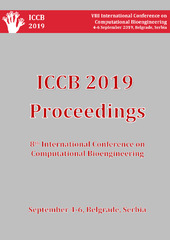Приказ основних података о документу
Combined 3D-QSAR modeling, molecular dynamics and molecular docking studies in rational drug design of novel 5-HT2A antagonists
| dc.creator | Radan, Milica | |
| dc.creator | Antonijević, Mirjana | |
| dc.creator | Đikić, Teodora | |
| dc.creator | Ružić, Dušan | |
| dc.creator | Nikolić, Katarina | |
| dc.date.accessioned | 2023-07-31T12:18:04Z | |
| dc.date.available | 2023-07-31T12:18:04Z | |
| dc.date.issued | 2019 | |
| dc.identifier.isbn | 978-86-81037-75-1 | |
| dc.identifier.uri | https://farfar.pharmacy.bg.ac.rs/handle/123456789/4947 | |
| dc.description.abstract | Serotonin 5-HT2A receptors are widely distributed in the human brain where they play a key role in many physiological functions. Numerous neurological disorders caused by 5-HT2A malfunction have made it a very attractive target. Therefore, analysis of 3D-structure of the pharmacophore as well as binding kinetics of 5-HT2A antagonists would be beneficial for future rational drug design. Three dimensional quantitative structure-activity relationship (3D-QSAR) study was combined with molecular docking and molecular dynamic (MD) simulation in order to find crucial structural features responsible for high binding affinity and selectivity of 5-HT2A antagonists. This study was performed on wide range of structurally diverse antagonists that were divided into three different clusters: clozapine, ziprasidone, and CHEMBL240876 derivates. We have used 50ns MD simulations to obtain inactive, antagonist bound, conformations of each cluster representative. Subsequently, these conformations were used as templates for docking studies in order to find virtually bioactive conformations of examined compounds. Selected virtually bioactive conformations were used for generation of specific molecular descriptors (Grid Independent Descriptors- GRIND) and 3D-QSAR model building. The 3D-QSAR approach was used to identify the most important structural determinants responsible for the antagonistic activity and to propose structural modifications for novel antagonists of serotonin 5-HT2A receptors. Furthermore, diverse internal and external validation methods were applied. Obtained statistical parameters indicated the reliability and good predictive potential of the created model. Following these findings we have identified differences and similarities in the binding mode and pharmacophores of structurally diverse 5-HT2A antagonists as well as conformational changes they provoke. | sr |
| dc.language.iso | en | sr |
| dc.publisher | University of Kragujevac, Kragujevac, Serbia | |
| dc.publisher | Bioengineering Reserach and Development Centre BioIRC | |
| dc.relation | info:eu-repo/grantAgreement/MESTD/Basic Research (BR or ON)/172033/RS// | sr |
| dc.rights | openAccess | sr |
| dc.source | ICCB 2019 Procedings - 8th International Conference on Computational Bioengineering, 4-6 September 2019, Belgrade, Serbia | sr |
| dc.subject | 3D-QSAR | sr |
| dc.subject | molecular docking | sr |
| dc.subject | MD simulation | sr |
| dc.subject | pharmacophore | sr |
| dc.subject | antagonists of serotonin 5HT2A receptors | sr |
| dc.title | Combined 3D-QSAR modeling, molecular dynamics and molecular docking studies in rational drug design of novel 5-HT2A antagonists | sr |
| dc.type | conferenceObject | sr |
| dc.rights.license | ARR | sr |
| dc.citation.spage | 84 | |
| dc.citation.epage | 84 | |
| dc.identifier.fulltext | http://farfar.pharmacy.bg.ac.rs/bitstream/id/13586/Combined_3D-QSAR_modeling_pub_2019.pdf | |
| dc.identifier.rcub | https://hdl.handle.net/21.15107/rcub_farfar_4947 | |
| dc.type.version | publishedVersion | sr |

